The Colors of Tarogil Village, Pakistan
A Color Workshop for Textile Students at B.N.U.
History and Background
The earliest known example of cotton is the fragment found at Mehrgarh, Pakistan, one of the most important Neolithic (Stone Age/7000 B.C. – 3200 B.C. ) sites.* Today, cotton textile production and apparel manufacturing are Pakistan's largest industries, accounting for about 70% of total export.
(* Source: Journal of Archaeological Science, Volume 29, Issue 12, December 2002, Pages 1393-1401)
During my last week in Pakistan, I conducted a color workshop for the students in the Textiles Department at Beaconhouse National University. The workshop included a field trip to the village - a small cluster of homes in the midst of the mustard fields that surrounds the Tarogil campus. The homes are primarily constructed of mud, mud-brick, and thatch. Unpaved streets and paths are filled with people dressed in traditional garb, donkey carts and buffalo carts (whose prototypes date back to the third millennium B.C.). No cars! A sense of timelessness . . . a step back to a time that most of us only see in movies. The visual landscape of Targogil village reminds us of that era in Pakistan that is the source of the earliest cotton fragment.
Tarogil Village Scene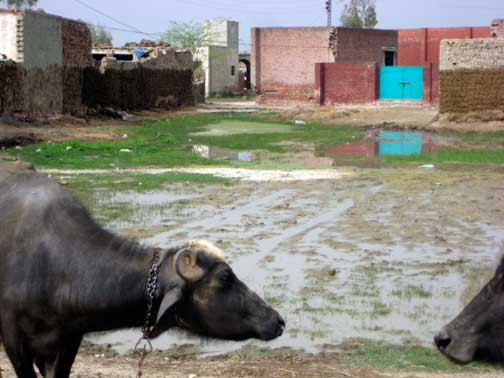
The Color Workshop
The assignment required that the textile students note the colors in the village. In other words, get up close to whatever they encountered – whether it were the colors of the mustard fields surrounding the village or the materials and surfaces of objects and structures, such as the bricks and iron gates.
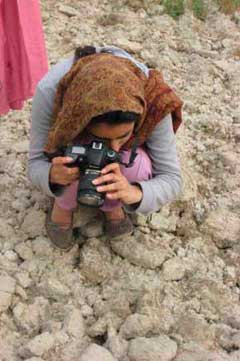
Photographing the colors of the rocks
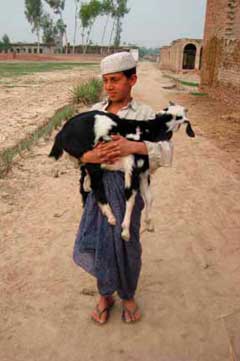
Boy and goat
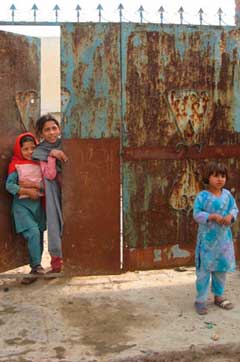
Children at the gate to a home
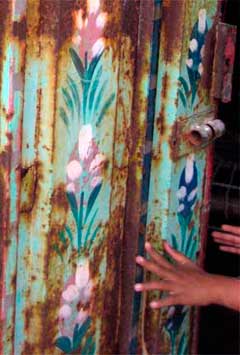
Detail of a painted door
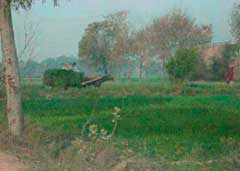
Mustard field surrounding the village
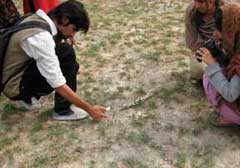
Examining the colors of the earth
More examples of color at Tarogil

One of the main streets

Mud and straw building materials
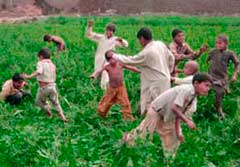
Tarogil boys playing in the field
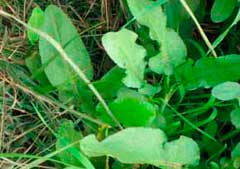
Vegetation
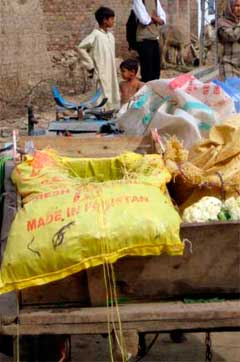
Groceries in a cart
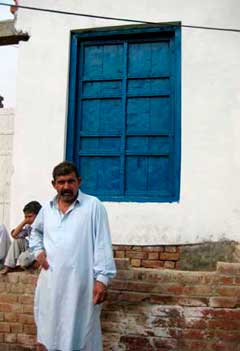
Brick wall, blue door, and villagers
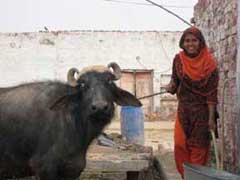
Water buffalo and woman
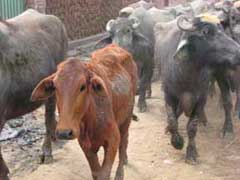
A herd stampedes down the street

Donkey cart and fresh produce
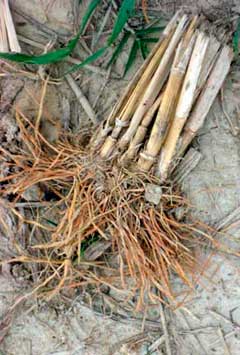
Found in the field

Woman and water buffalo
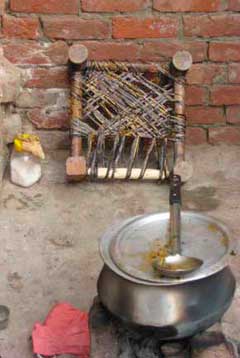
Cooking tools
The Color Workshop Assignment
After compiling their color notations, each student selected three favorite colors and two least favorite colors for a composition based on the Bezold effect.
Example of the "Bezold Effect"
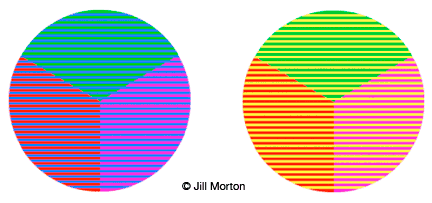
(Graphic from Color Logic, by Jill Morton)
Three colored areas in the background (the 3 pie-shaped areas) on each circular form remain the same. Only the color of the stripes on top of these areas changes. In the example above, the stripes change from blue in the circle at the left to yellow in the circle on the right. The transformational effect is quite amazing given the limited palette.
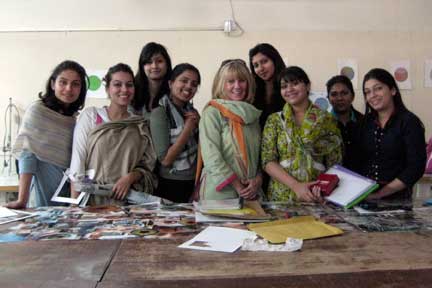
Assistant Professor Rohma Khan (far left), textile students, and Jill Morton (center) Examples of some of the "Bezold Effect" studies are on the wall behind the group.
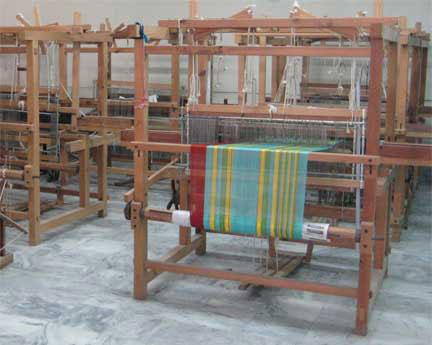
Looms in the textile studio at Beaconhouse National University, Tarogil, Pakistan
Jill Morton, March 2009

